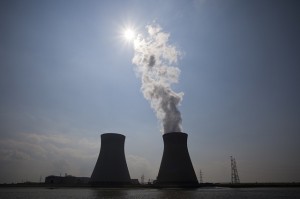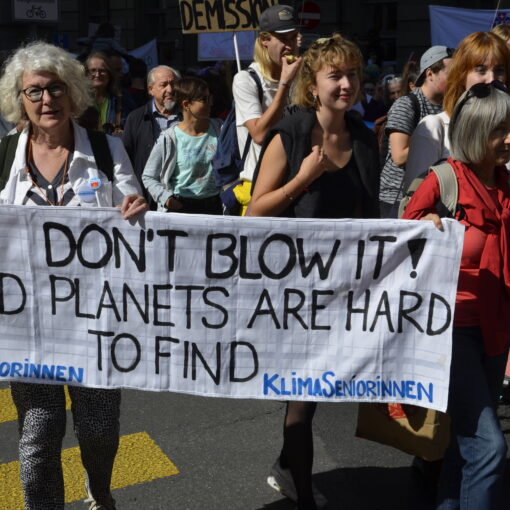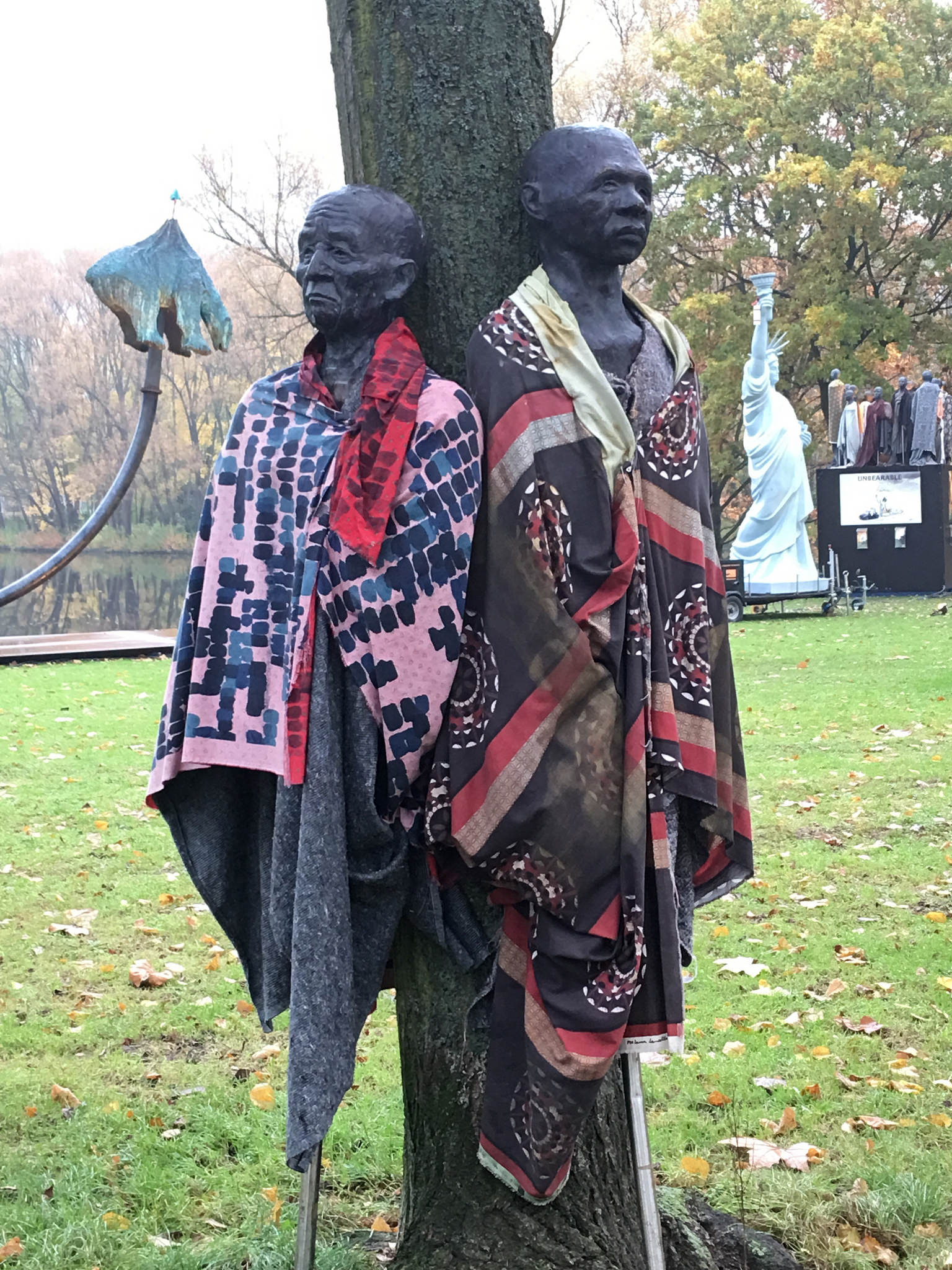By Yeein Lee, Summer Legal Intern
 Even as President Obama’s commitment to fight climate change has led his Administration to support low-carbon nuclear power,[1] many U.S nuclear power plants are being shut down or slated to shut down, and fewer companies are seeking licenses to build new plants. Although the US is still the world’s largest producer of commercial nuclear power, with 100 commercial reactors licensed to operate at 65 nuclear power plants and whose nuclear power comprised about 19.4% of the nation’s total electricity in 2013,[2] continued low natural gas prices will likely drive more plant closures, given the high maintenance and capital investment requirements for the ageing fleet. In contrast, nuclear power in South Korea is growing. The growth in nuclear power is particularly interesting, given the considerable public hostility towards nuclear power in South Korea following the 2011 Fukushima disaster in nearby Japan, as well as corruption scandals in its domestic nuclear industry. The trend of net nuclear electricity generation in the U.S. and South Korea can be found in Figure 1.
Even as President Obama’s commitment to fight climate change has led his Administration to support low-carbon nuclear power,[1] many U.S nuclear power plants are being shut down or slated to shut down, and fewer companies are seeking licenses to build new plants. Although the US is still the world’s largest producer of commercial nuclear power, with 100 commercial reactors licensed to operate at 65 nuclear power plants and whose nuclear power comprised about 19.4% of the nation’s total electricity in 2013,[2] continued low natural gas prices will likely drive more plant closures, given the high maintenance and capital investment requirements for the ageing fleet. In contrast, nuclear power in South Korea is growing. The growth in nuclear power is particularly interesting, given the considerable public hostility towards nuclear power in South Korea following the 2011 Fukushima disaster in nearby Japan, as well as corruption scandals in its domestic nuclear industry. The trend of net nuclear electricity generation in the U.S. and South Korea can be found in Figure 1.
South Korea already ranks fourth in the world in nuclear power, following the US, France and Russia, and has the highest density of nuclear reactors in the world. Its 23 reactors provide almost one-third of the nation’s electricity, and its government aims to provide about half of the electricity from over 30 units by 2022.[3] Five new nuclear plants are under construction, and four new nuclear plants have been authorized this year. According to the government’s Second Basic Energy Plan from January 2014, which maps out the general national energy policies until 2035, the government aims to reduce total energy consumption by 13% and electricity demand by 15%.[4] The proportion of fossil energy would be reduced from 2011’s 65.5% to 52%, which would require the construction of more nuclear plants, resulting in a total of 41 nuclear plants in 2035.
Nuclear energy remains a strategic priority for South Korea. The nation imports 97% of its fuel. One third of all imports into the country is energy, and about 180 billon dollars was spent just for energy import in 2013.[5] Without nuclear power, this import bill would have been about $20 billion higher. Although South Korea lacks natural resources, its per capita energy consumption is the world’s 7th largest. This surpasses other nations with higher GDPs, not to mention those with greater energy generating capacities. Most of South Korea’s energy production relies on fossil fuels, although no oil is drilled within Korean territory.
With her 2013 inauguration, President Park Geun-hye announced that South Korea would continue to follow its current nuclear energy plan, while focusing on nuclear plant safety. The Park Administration decided that securing alternative energy sources is difficult, and renewable energy is inefficient. Mountainous and water-scarce, South Korea has not yet found a scalable mix of renewable energy sources, and nuclear power is comparatively cheap in South Korea, costing 39 won (KRW) per kWh (about 3¢/kWh), compared with coal 53.7 won, LNG 143.6 won, and hydro 162 won.[6]
Nevertheless, the public hostility towards nuclear power in South Korea is strong, especially after the Fukushima disaster. According to a 24-country survey conducted in April 2011, shortly after the Fukushima disaster, 61% of South Korean residents opposed nuclear power, and 68% of South Korean residents opposed the construction of new plants. Among the surveyed nations, South Korea had the highest percentage of nuclear opponents (66%), largely due to Fukushima and the proximity to Japan.[7] In a November 2013 survey, 45.2% of South Koreans reported that they are willing to face increased electricity costs from the reduction of nuclear energy. 77.8% of Koreans are worried about the safety of nuclear power plants, and 53.9% distrust the government’s nuclear energy policy.[8]
 According to press reports, past nuclear power plant scandals in South Korea also have led to public mistrust. In November 2012, Korea Hydro & Nuclear Power Co., LTD. (“KHNP”) accepted falsely certified parts for at least five of its 23 nuclear reactors. In October 2013, the South Korean Policy Coordination Ministry found out that 277 out of 22,000 documents of tests on components at 20 nuclear reactors were forged. Of 218,000 documents examined for eight additional units, including those under construction, a total of 2010 were falsified.[9] In May 2013, it was discovered that safety-related control cables for four of KHNP’s nuclear reactors had forged documentation. The Nuclear Safety and Security Commission (NSSC) immediately ordered KHNP to halt operations at those four units until the cables were replaced.[10] None of those corruption scandals led to any critical accidents, but they contributed to significant public mistrust of the nation’s oversight of nuclear power.
According to press reports, past nuclear power plant scandals in South Korea also have led to public mistrust. In November 2012, Korea Hydro & Nuclear Power Co., LTD. (“KHNP”) accepted falsely certified parts for at least five of its 23 nuclear reactors. In October 2013, the South Korean Policy Coordination Ministry found out that 277 out of 22,000 documents of tests on components at 20 nuclear reactors were forged. Of 218,000 documents examined for eight additional units, including those under construction, a total of 2010 were falsified.[9] In May 2013, it was discovered that safety-related control cables for four of KHNP’s nuclear reactors had forged documentation. The Nuclear Safety and Security Commission (NSSC) immediately ordered KHNP to halt operations at those four units until the cables were replaced.[10] None of those corruption scandals led to any critical accidents, but they contributed to significant public mistrust of the nation’s oversight of nuclear power.
The national tragedy of the sinking of the MV Sewol ferry in April 2014, resulting in 292 casualties, increased hostility against the government. Seemingly pervasive safety ignorance across society has created uneasiness among Koreans, and the irrevocability of nuclear accidents especially worries the public.
In response to public anxiety, the Korean government has been stressing nuclear energy’s safety. KHNP states that its nuclear power plants have been extensively examined for their ability to safely withstand earthquakes, tsunamis and floods. In February 2014, Korean Nuclear Safety Division Chair Lee Eun-cheol proclaimed a plan to implement the stress tests used by the EU to examine resilience of nuclear power stations under extreme conditions.[11] The new nuclear safety directive is designed to implement higher standards for nuclear safety in South Korea, as it obligates the plants to take preventive measures for a wider and more unlikely range of accidents. It would order plant operators to update and enhance infrastructure, accident management protocols and emergency response procedures. The new directive would also bring more transparency, as it requires more public information and participation in plant operation licensing, and re-licensing.
Moreover, the industry and government have emphasized the structural difference between Korean and Japanese nuclear plants. All of Korea’s nuclear reactors are either Pressurized Water Reactors (PWRs) or Pressurized Heavy Water Reactors (PHWRs), while Fukushima’s reactor was a Boiling Water Reactor (BWR), an older design that KHNP believes has greater risk.[12] Also, unlike Korean ones, Fukushima’s reactors lacked active natural circulation cooling systems, which would maintain cooling functions, even without backup power.
Even in the face of public animosity towards nuclear energy, South Korea has been actively sticking with its nuclear energy plan. In contrast, while the U.S. government has been supportive of the expansion of nuclear power, as demonstrated by the Energy Policy Act of 2005, the practice has fallen short. The nations’ different energy sector structures may partially explain this phenomenon. South Korea’s sole electric power utility was KEPCO, a government corporation, from 1961 until April 2001. KEPCO’s power generation part was then divided into six entities in 2001. The largest of these six KEPCO subsidiaries, KHNP, encompasses all the nuclear generation capacity with a small amount of hydropower. KEPCO retains its monopoly on energy transmission and distribution. The public enterprise KHNP manages all existing and proposed nuclear plants. In contrast, in the U.S., the nuclear industry is spread out among approximately 48 companies, regulated by a strong, independent regulatory agency. The sheer difference between the two nations’ size and political systems (US federalism vs. Korean centralism) may further explain some of the differences.
[13]
[1] “Executive Office of the President – June 2013”: https://www.whitehouse.gov/sites/default/files/image/president27sclimateactionplan.pdf.
[2] World Nuclear Association: https://www.world-nuclear.org/info/Country-Profiles/Countries-T-Z/USA–Nuclear-Power/.
[3] World Nuclear Association: https://www.world-nuclear.org/info/Country-Profiles/Countries-O-S/South-Korea/.
[4] the Ministry of Trade, Industry & Energy (MOTIE):https://www.motie.go.kr/motie/py/cp/energysystem/energysystem.jsp.
[5] “Nuclear power foundation” by Korea Hydro & Nuclear Power Co., LTD: https://www.khnp.co.kr/.
[6]Korea Hydro & Nuclear Power Co., LTD.
[7] This survey was conducted by the international research company Ipsos for Reuters News: https://www.ipsos-na.com/news-polls/pressrelease.aspx?id=5265.
[8]Korean Federation for Environmental Movement.
[9] https://www.hankyung.com/news/app/newsview.php?aid=2014062462491.
[10] https://www.segye.com/content/html/2014/06/24/20140624005432.html?OutUrl=naver.
[11]https://www.edaily.co.kr/news/NewsRead.edy?SCD=JG21&newsid=03004486606024960&DCD=A00702&OutLnkChk=Y.
[12] KHNP’s statement for PWR being safer than BWR: https://www.nppinfo.co.kr/action?cmd=NOPG03&searchTab=2.
See also U.S. Nuclear Regulatory Commission, “Nuclear Reactors,” https://www.nrc.gov/reactors/power.html.
[13] Numeric data from US Energy Information Administration “Annual Energy review”-https://www.eia.gov/totalenergy/data/annual/showtext.cfm?t=ptb0902; Korea Electric Power Corporation “2013 Korea electric statistics” – https://cyber.kepco.co.kr/kepco/KE/D/htmlView/KEDDHP040.do?menuCd=FN2503.




